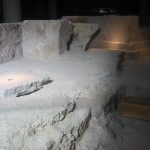THE THEATER OF LA BANDA PRIMITIVA HOSTED THIS EVENT THAT RETURNED TO THE CHRISTMAS PROGRAM AFTER TWO YEARS OF STOP DUE TO THE PANDEMIC

This morning the Banda Primitiva theater hosted the 18th edition of the “Cantem al Nadal” Choir Festival. After two years, this event, organized by the Department of Culture, has returned to Llíria’s agenda to mark the prelude to the Christmas program in the town.
Nearly 400 people have performed at this musical gathering that has had the participation of the choirs of the schools of the municipality of Sant Vicent Ferrer, Santa Ana, Unió Musical, Francisco Llopis, Cor l’Alegria del Sant Miquel, as well as the Occupational Center ” El Prat” and the Batukaranga of the Pentagrama Association.
The choirs have performed a varied repertoire of Christmas songs from around the world. As is traditional, the “Cantem al Nadal” Festival has concluded with the joint singing of the traditional Llíria Christmas carol “Nyo Maria”.
The students and teachers have received a reminder detail for their participation in this event that has been prepared by the users of the Occupational Center “El Prat”.








